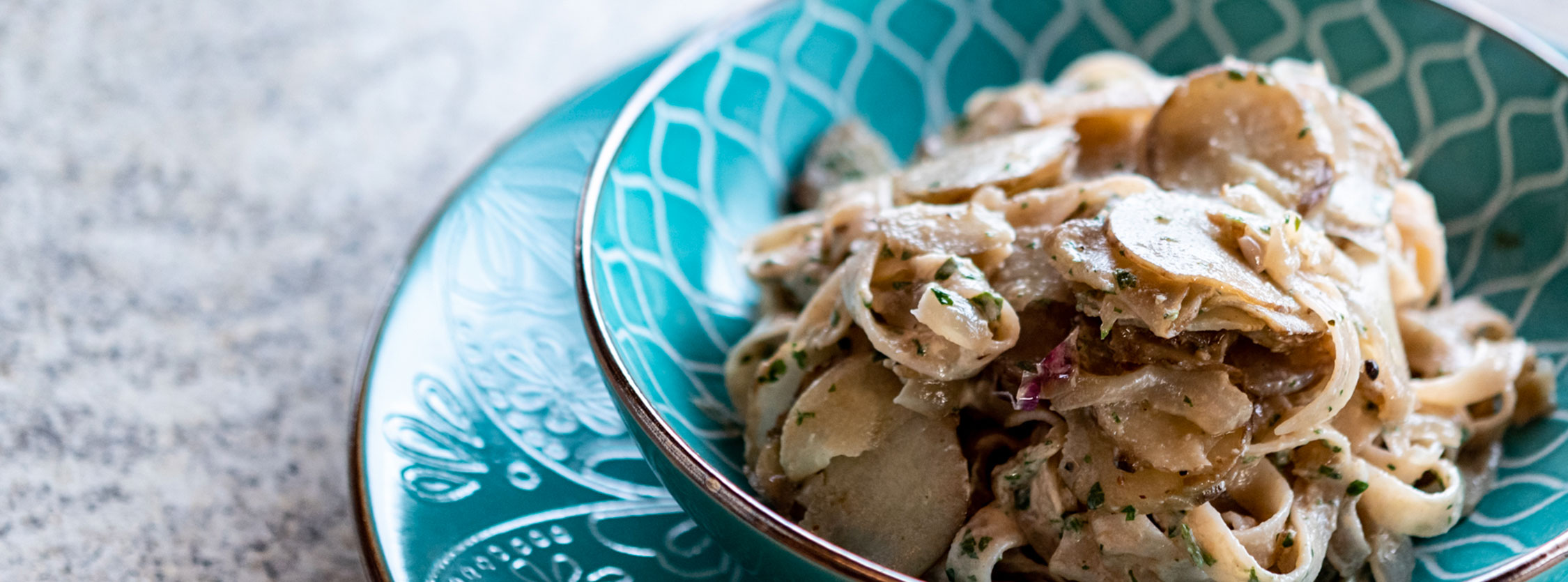

Serves 4
360 g Sgambaro organic emmer wheat fettuccine
300 g Jerusalem artichokes
2 medium-sized onions
For the tahini and lemon cream
60 g tahini (sesame seed cream typical of Middle Eastern cuisine)
1 lemon
2 tablespoons of chopped parsley
Extra virgin olive oil
Salt
Pepper
Method
Slice the onions and sauté them in a pan with a drizzle of extra virgin olive oil and a dash of water until shiny. Thoroughly brush the Jerusalem artichokes under running water and finely cut them into slices.
Add them to the onions in a saucepan, add salt and pepper to taste, cover with a lid and cook for about 10 minutes, until the Jerusalem artichokes have softened.
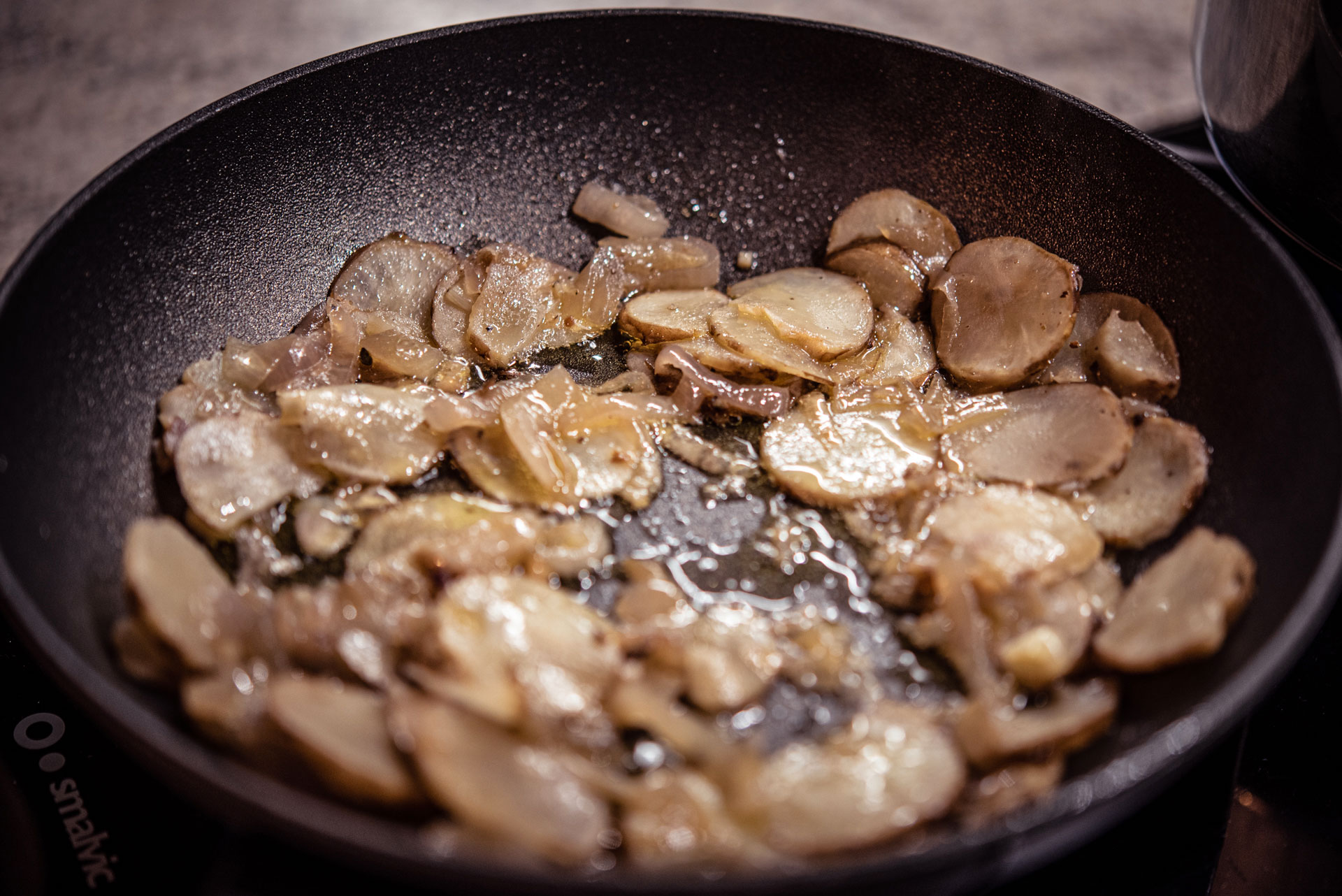
After putting the pasta in boiling salted water, prepare the tahini cream: mix the tahini with the juice of half a lemon and the parsley in a bowl and add enough pasta cooking water to obtain a smooth cream.
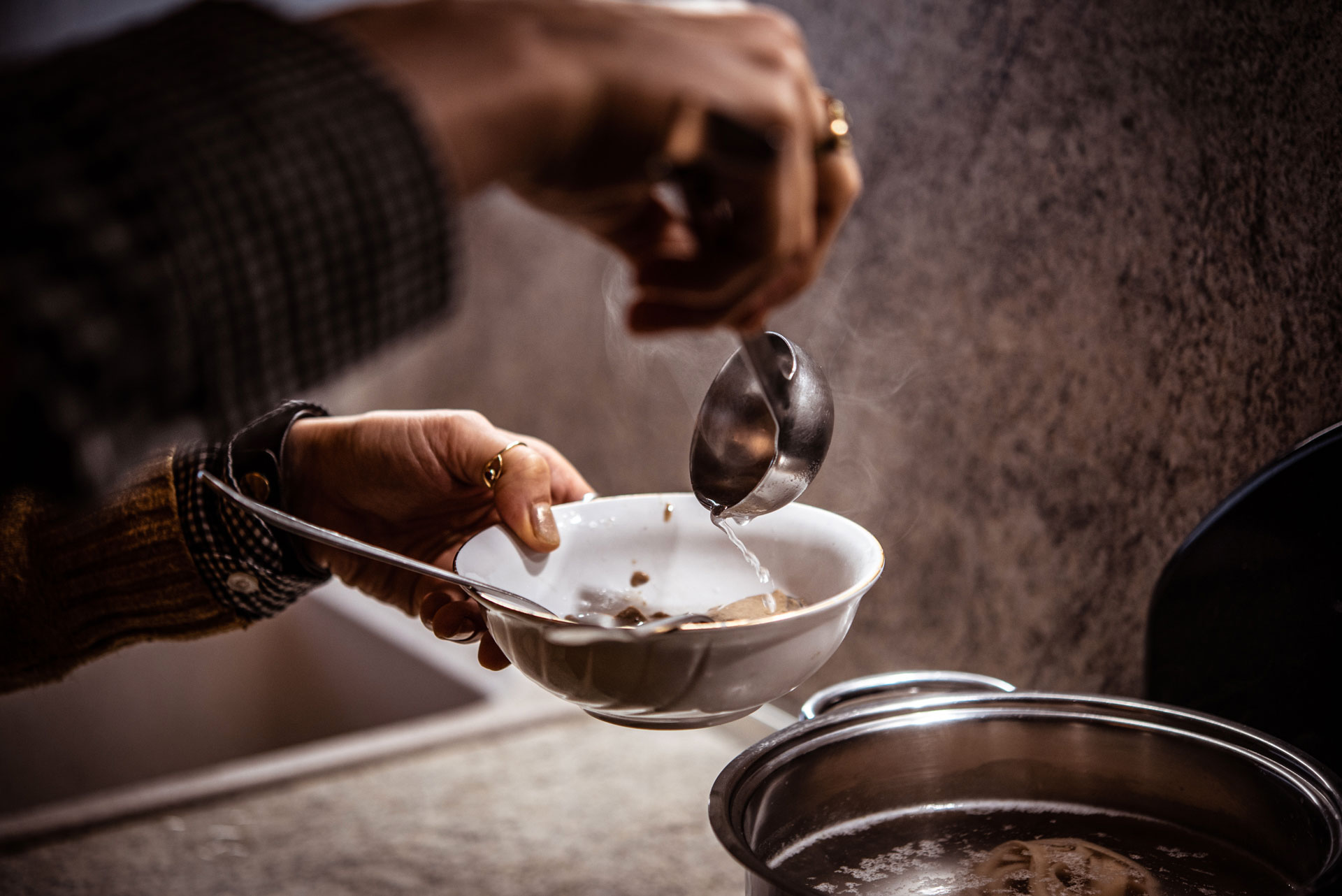
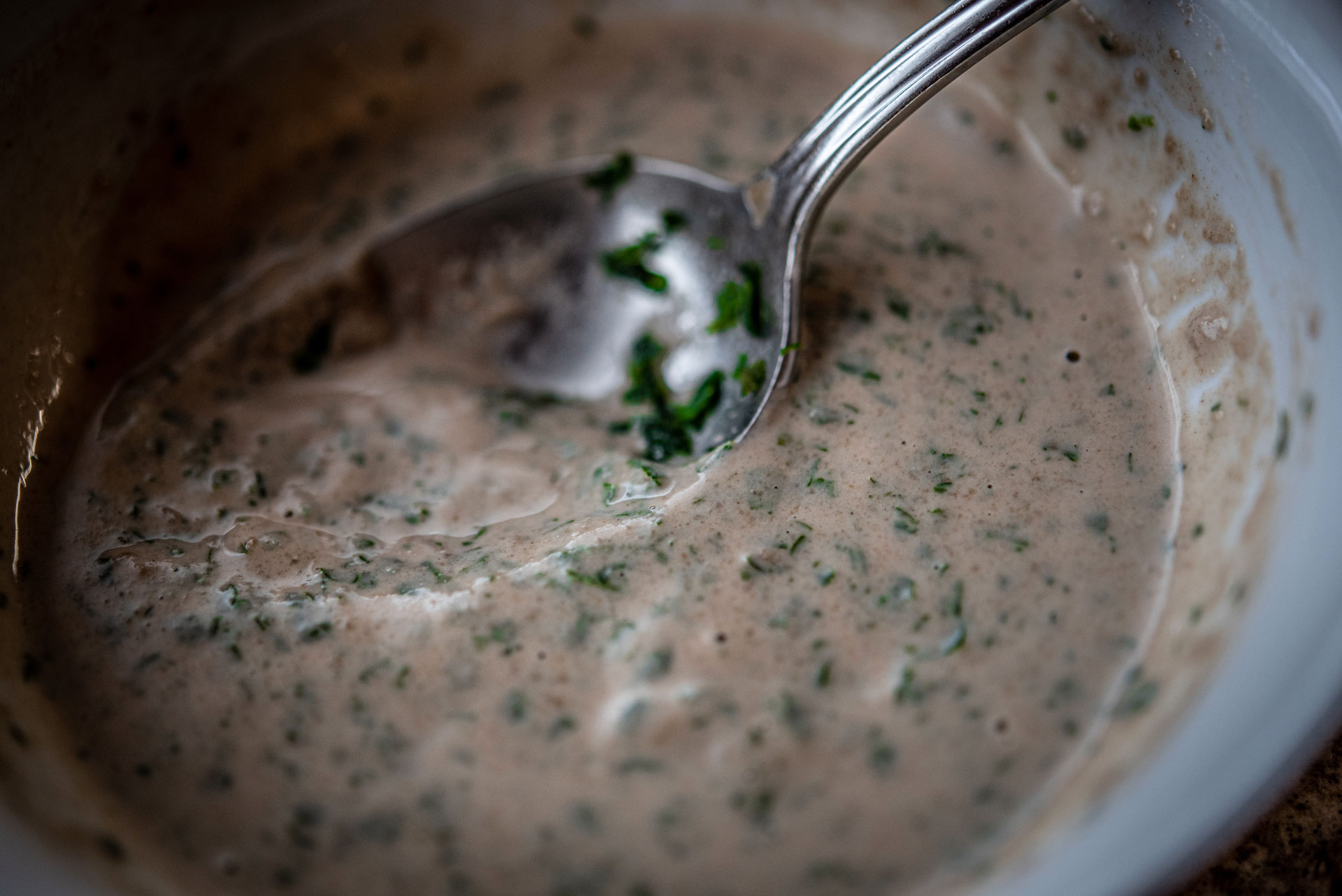
Drain the pasta when ‘al dente’ and sauté it in the saucepan with the vegetables.
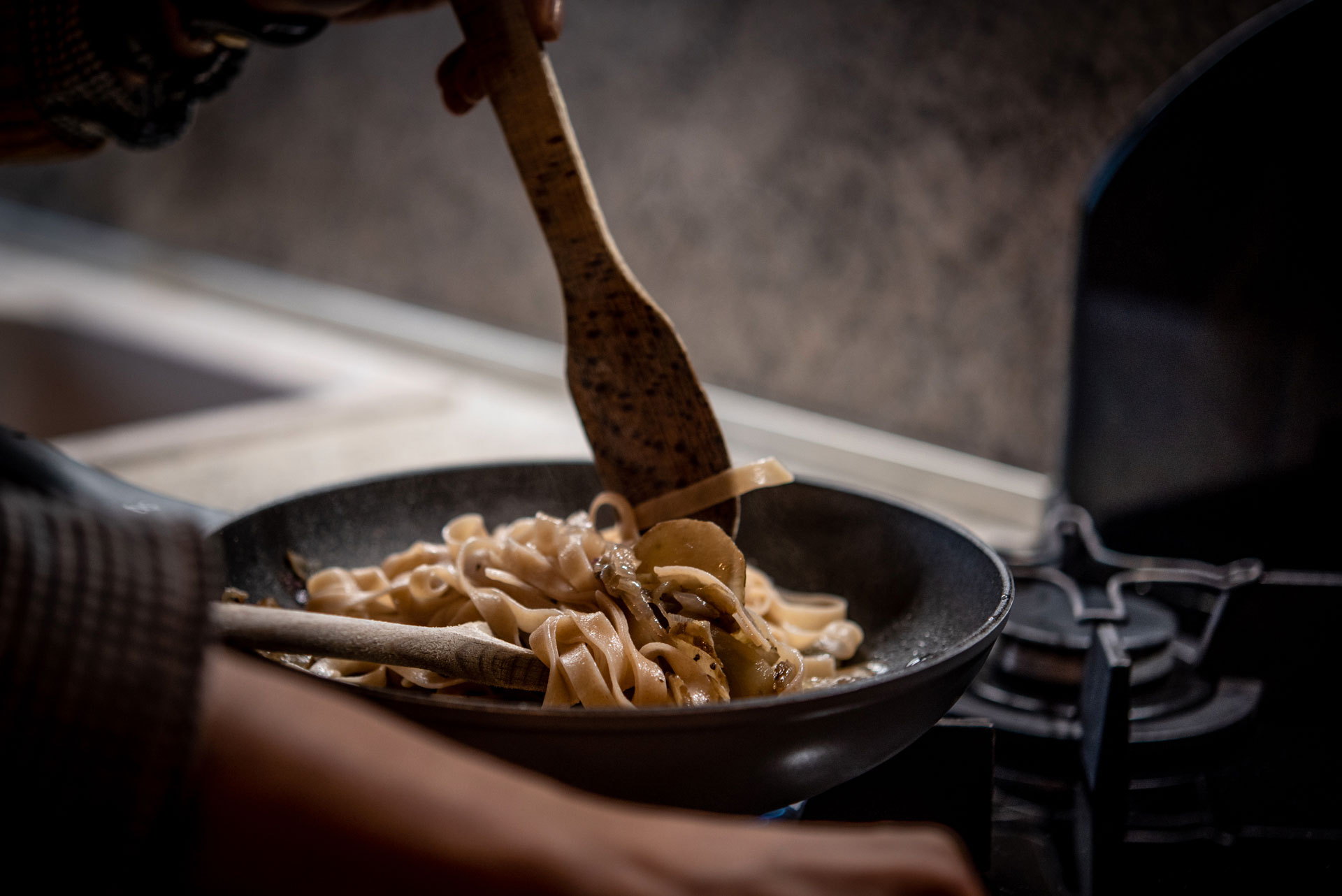
Then add the tahini cream and stir.
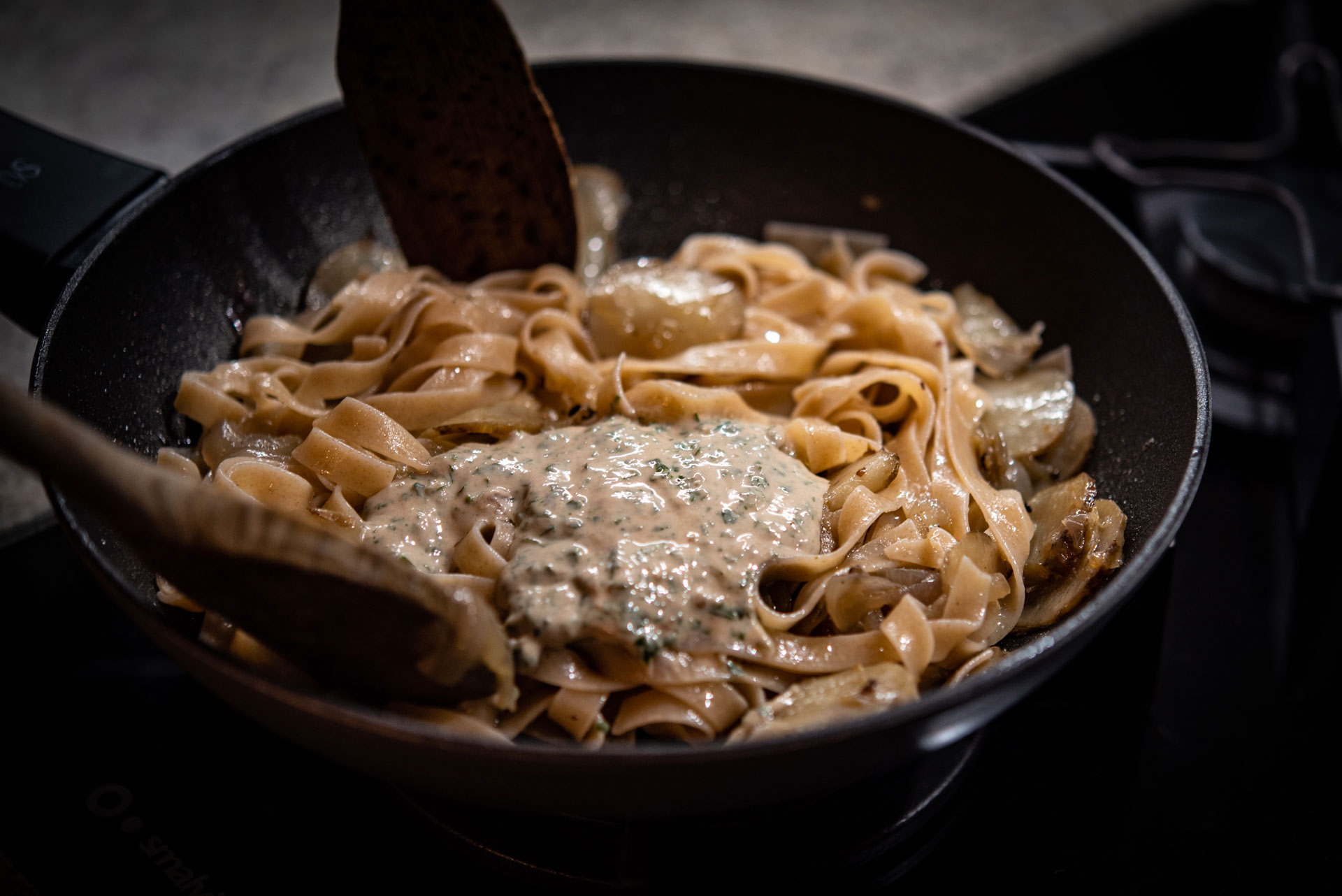
Finish off with a drizzle of uncooked oil.
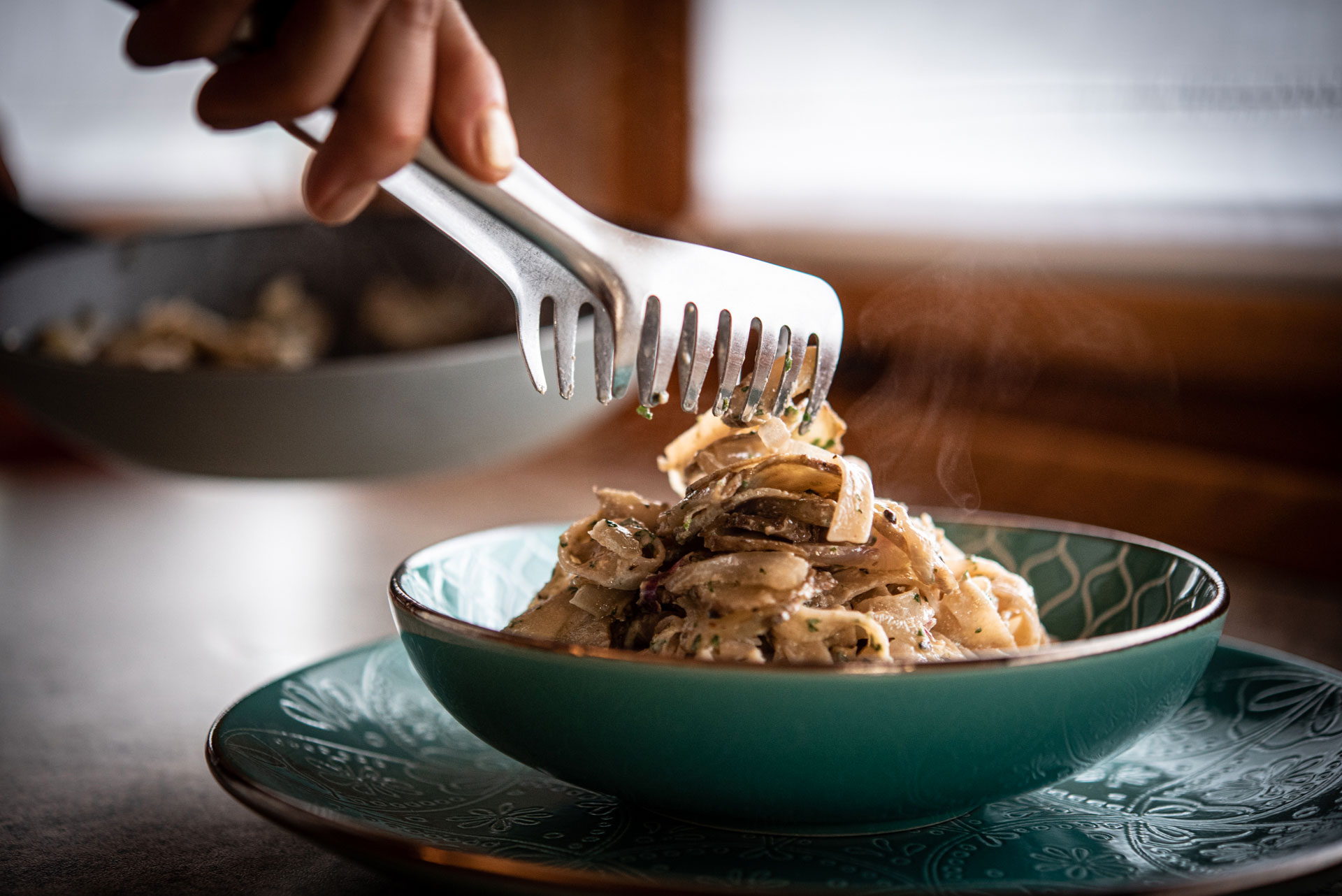
Notes on emmer wheat
Among Triticum varieties (large spelt, or monococcum, medium spelt or dicoccum, large spelt or German wheat), dicoccum is the most popular one in Italy and also the most productive. It has two caryopses per ear – just like German wheat – compared to monococcoum, which only produces one grain per ear.
Unlike wheat, after threshing its grain remains in its husk and guarantees:
- higher fibre content (6.8 g per 100 g) for a healthier gut
- a good intake of potassium, magnesium, calcium, iron, vitamin C and B and a considerable amount of protein (15 g per 100 g), which makes it an extremely suitable supplement after working out or for those who are tendentially asthenic.
Even if in lower amounts compared to wheat, it contains gluten, which means it is not suitable for people with coeliac disease. Those who have a gluten intolerance are instead recommended to occasionally eat spelt as a cereal to be integrated in a diet designed for intestinal rehabilitation (obviously under the monitoring of a professional), alternating it with sources of carbohydrates that do not contain it.
Trivia
The Italian word for flour, farina, comes from farrum, the term used by the Romans for this ancient cereal, a staple source of nutrition during the Empire. Flour was used to make a very nutritious form of polenta called puls, which was effective in keeping people full for longer.
Ceremonies like the cofarreatio – sharing a spelt focaccia between new newlyweds as a symbol of their future life together – and the mola salsa – offering a mix of spelt, spring water and salt during ceremonies involving a sacrifice or purification – are testament to the sacred relevance of this cereal in ancient Rome.
Recipe by Elena Agnoletto, therapist and naturopath
www.facebook.com/elenahealthtutor/
www.instagram.com/elenahealthtutor/
Photos by Lucrezia Pegoraro Photography
www.facebook.com/lucreziapegoraroph/
www.instagram.com/lucreziapegorarophotography/



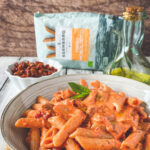



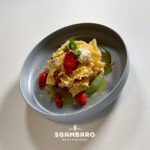
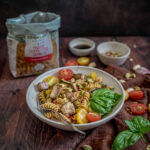
Comments